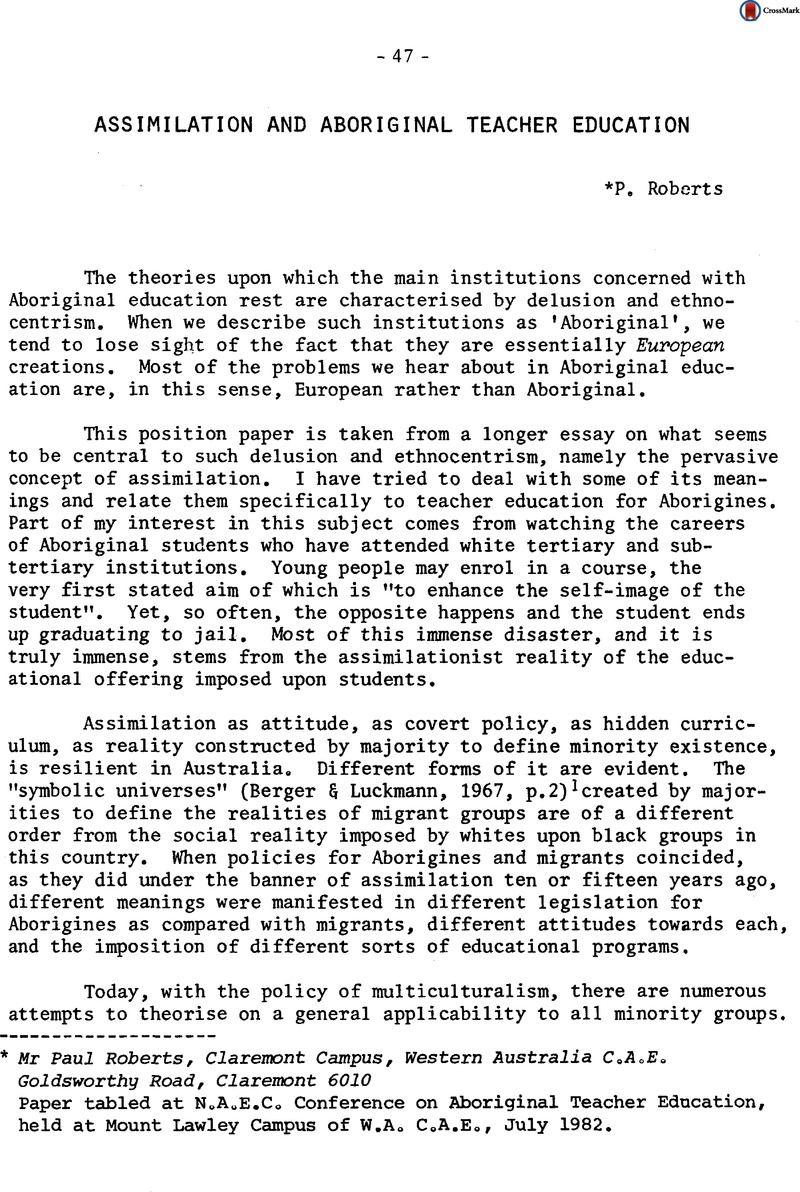No CrossRef data available.
Article contents
Assimilation and Aboriginal Teacher Education
Published online by Cambridge University Press: 22 July 2015
Abstract
An abstract is not available for this content so a preview has been provided. As you have access to this content, a full PDF is available via the ‘Save PDF’ action button.

- Type
- Editorial
- Information
- Copyright
- Copyright © Cambridge University Press 1983
References
1.Berger, P. and Luckmann, T., 1967: The Social Construction of Reality. New York, Anchor.Google Scholar
2.Richardson, A., 1979: The assimilation and adjustment of immigrants. In Johnston, R. (Ed.): Immigrants in Western Australia.Google Scholar
3.Social Development of the Papunya People. Memo dated 18/6/64 to Northern Territory Director of Welfare, Department of Aboriginal Affairs Library, Darwin.Google Scholar
4.Tatz, C., 1982: Aborigines and Uranium and Other Essays. Melbourne, Heinemann. (p. 62)Google Scholar
5. Ibid.Google Scholar
6.Harris, S. and Christie, M.: Bicultural education – towards a definition. In McClay, D.J., Harris, S.G. & Christie, M.J. (Eds): Teaching in Arnhem Land. Publication pending.Google Scholar
8.Education for Aborigines. Report to the Schools Commission of the Aboriginal Consultative Group, 1975, p. 17.Google Scholar
9.Stringer, E., 1982: An evaluation of the WAIT Aboriginal bridging course. Faculty of Education, W.A.I.T., p. 35.Google Scholar
10.Harris, S.: Aboriginal learning styles and the three R’s. p.10, (no publishing details given).Google Scholar




